 triggered by overfishing of great whales New research shows how extraction of whales has resulted in broad and devastating ecosystem impacts September 23, 2003
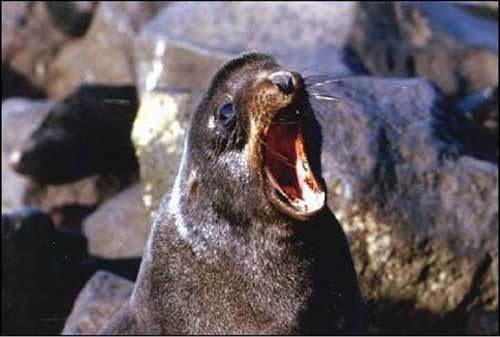 Photo taken by Rolf Ream, National Marine Mammal Laboratory (NMML) The paper, Sequential megafaunal collapse in the North Pacific Ocean: An ongoing legacy of industrial whaling, offers a unified explanation for why populations of harbor seals, fur seals, sea lions and sea otters in Western Alaska have crashed during the last several decades. Lead author Alan Springer (University of Alaska, Fairbanks) and his co-authors propose that the decimation of great whale (baleen and sperm) populations by overfishing removed a major source of food for killer whales. This may have forced some killer whales to "fish down the food web," preying on other marine mammals which in turn has had devastating impacts on marine ecosystems. 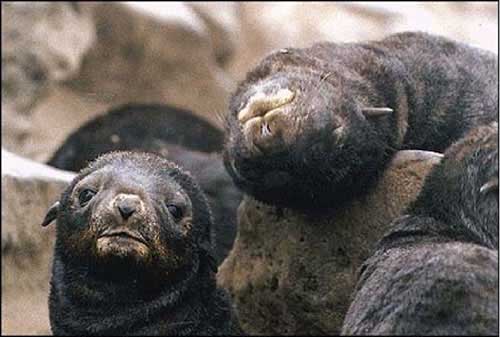 Photo taken by Rolf Ream, National Marine Mammal Laboratory (NMML)
Springer, an oceanographer who was investigating causes of marine mammal collapse due to food limitation and ocean changes, approached coauthor Jim Estes (University of California, Santa Cruz) to explore the possibility that the declines might also be linked to the historical removal of great whales. Estes had demonstrated (Science 282,1998) that killer whale predation was driving down sea otter populations and affecting kelp forest ecosystems. Springer had researched the whaling records and wondered whether the massive extraction of these animals could have triggered an increase in killer whale predation on other marine mammals as well. 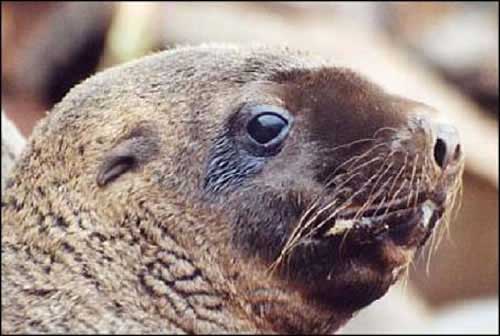 National Marine Mammal Laboratory (NMML) Photo Coming at the issue from both the beginning with the rapid spread of commercial whaling after WWII, and the end, with drastic declines of kelp forests today, Springer, Estes and their six co-authors present a domino theory of major ecosystem impacts and restructuring. It started with the capture of hundreds of thousands of great whales from the North Pacific Ocean from 1946 to 1979. The paper's eight authors argue that this removal of prey forced some killer whales to seek alternative sources of food. Beginning with harbor seals (populations collapsed early 70's - early 80's) then fur seals (mid 70's - mid 80's), sea lions (late 70's - 90 's) and finally sea otters (90's - today), the killer whales targeted populations of small, coastal marine mammals. The authors surmise that killer whales may have preferred harbor seals and fur seals to sea lions because of the higher nutritional value of harbor seals and because seals are less aggressive and easier to catch. 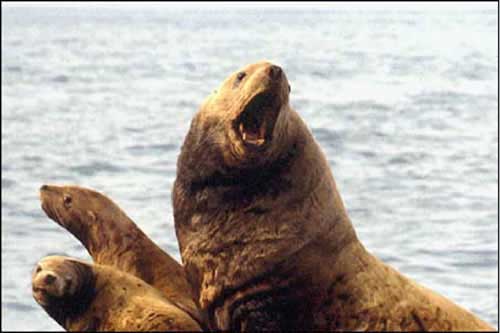 Photo taken by Rolf Ream, National Marine Mammal Laboratory (NMML)
"The point of this story is not to vilify whaling and exonerate overfishing," says Estes. "In principle we think that when any species is exploited to excess - be it pollock, halibut or whales - it may trigger a broad and devastating 'domino effect,' and the ecosystem impacts are significant." Estes had already shown that killer whale predation had a significant impact on sea otter populations, but the question remained as to whether they could really account for the other declines. To see if it was possible for a change in killer whale feeding behavior to have a significant impact on seals and sea lions, co-authors Dan Doak and Terrie Williams modeled the nutritional requirements of killer whales, the nutritional value of sea lions and otters, and the number of deaths necessary to explain the documented declines of marine mammals in the Aleutian Islands. They found that a dietary shift by less than 1% of the estimated 3,888 killer whales across the region would have been enough to drive the observed declines. The inability of sea otters, seals and sea lions to sustain increased mortality from redirected killer whale predation makes sense based on their much smaller aggregate biomass compared with the great whales. "After five years of examining this problem, I don't see any fatal inconsistencies with our hypothesis," says Estes. 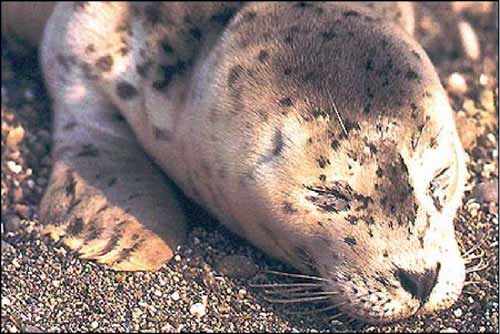 National Marine Mammal Laboratory (NMML) Photo Many scientists have difficulty believing that predation could play such an important role in the structure of marine food webs, but the authors show that the timing of events; information on the abundance, diet and foraging behavior of both predators and prey; and feasibility analyses based on demographic and energetic modeling, are all consistent with this hypothesis. Dr. Robert Paine, of the University of Washington agrees, "It's a plausible and unifying explanation for the sequential collapse. In a multiple causation world, this is likely one of the main causes." Traditionally, little attention has been paid to the role of predation in structuring open ocean ecosystems (i.e. top down effects). For the last 30 years most scientists have focused on bottom up influences such as changes in the physical oceanic environment and food shortages. These researchers are convinced that the power of predation is much greater than previously realized if animals are forced to switch food sources, the ripple effects through an ecosystem can be profound. One of the most striking implications of this work is the complex interconnections between changes in open ocean populations and coastal environments. This is most apparent in Estes' study sites throughout the Aleutian Archipelago where he and his team have studied kelp forests for over thirty years. "What we've seen is that the kelp forest ecosystem in South Western Alaska went from being robust to beinggone. It's staggering that it occurred over such a large area in such a short time just a few years," says Estes. "The food web interconnectivity - that urchin explosions could be linked to whaling 50 years ago - is amazing." 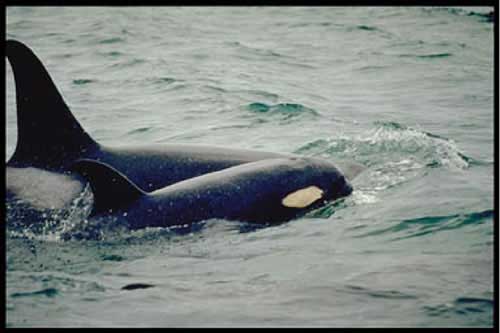 Photo taken by Janice Waite, National Marine Mammal Laboratory (NMML)
"The message," says Springer, "is that overfishing and massive extraction can lead to food web impacts that are unexpected and unintended." The authors feel that the importance of predation in structuring food webs needs to be more fully appreciated and understood and humans are the ultimate predators. This points to the need for caution in managing fisheries today. The kind of extraction that happened with whales fifty years ago still goes on with other species, wearing away the resilience of the system. "To me it very much is
an overfishing problem same damn thing but fifty
years ago whales were the fish," say Estes
Source of News Release:
Photographs courtesy:
|